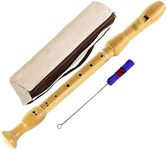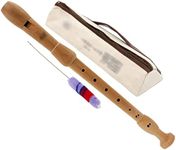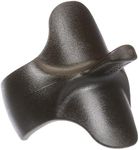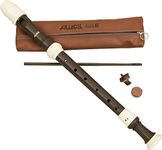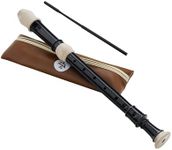Buying Guide for the Best Alto Recorders
Choosing the right alto recorder can greatly enhance your musical experience, whether you're a beginner or an advanced player. The alto recorder, also known as the treble recorder, is a popular choice for its rich, warm sound and versatility in various musical genres. When selecting an alto recorder, it's important to consider several key specifications to ensure you find the best fit for your needs and preferences.MaterialThe material of the recorder affects its sound quality, durability, and maintenance. Recorders are typically made from plastic or wood. Plastic recorders are more affordable, durable, and require less maintenance, making them ideal for beginners or young players. Wooden recorders, on the other hand, offer a richer, more complex sound and are preferred by more advanced players. They require more care and maintenance to prevent cracking and warping. Choose a plastic recorder if you are just starting out or need a durable instrument for frequent use. Opt for a wooden recorder if you are looking for superior sound quality and are willing to invest time in its upkeep.
Fingering SystemThe fingering system of a recorder determines how you play the notes. There are two main systems: Baroque (English) and German. The Baroque system is more common and preferred by advanced players due to its accurate intonation and wider range of notes. The German system is simpler and often recommended for beginners because it has easier fingerings for certain notes. If you are a beginner, you might find the German system easier to learn. However, if you plan to advance your skills, starting with the Baroque system could be beneficial in the long run.
PitchThe pitch of a recorder refers to the tuning standard it is designed to play in, typically A=440 Hz or A=415 Hz. A=440 Hz is the modern standard pitch and is suitable for playing with most contemporary instruments. A=415 Hz is a lower pitch often used in early music ensembles to match historical tuning standards. If you plan to play with other modern instruments or in a variety of settings, choose a recorder tuned to A=440 Hz. If you are specifically interested in early music and historical performance, a recorder tuned to A=415 Hz might be more appropriate.
KeyworkSome alto recorders come with additional keywork, which can make certain notes easier to play and improve intonation. Keywork is more common on higher-end wooden recorders and can be beneficial for advanced players who require precise control over their instrument. Beginners and intermediate players typically do not need keywork and can focus on mastering the basic fingerings. If you are an advanced player or have specific technical requirements, consider a recorder with keywork. Otherwise, a standard recorder without keywork should suffice.
Brand ReputationThe reputation of the brand can be an indicator of the quality and reliability of the recorder. Established brands with a history of producing high-quality instruments are often a safer choice. They are more likely to offer consistent quality, good customer support, and better resale value. Researching reviews and seeking recommendations from experienced players or teachers can help you identify reputable brands. Choose a recorder from a well-known brand to ensure you are getting a reliable and well-crafted instrument.
